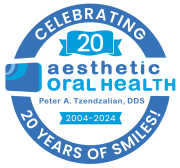Inlays and Onlays
Dental inlays and onlays are indirect restorations that help to repair damaged teeth. They are often used when a tooth structure is too compromised for a simple filling but not extensive enough to require a dental crown. Inlays fit within the grooves of your tooth, while onlays cover a larger area, including the cusps.
Understanding Dental Inlays and Onlay
These restorations preserve more of the natural tooth structure compared to traditional fillings, providing a strong and durable solution for addressing dental damage.
Common Dental Issues Addressed by Inlays and Onlays
These restorative treatments are particularly beneficial for addressing tooth decay and damaged teeth. They are also effective in cases where traditional fillings may not suffice due to extensive tooth damage. Inlays and onlays offer a middle ground between basic fillings and full dental crowns, making them a versatile option for preserving the natural tooth structure.
Benefits of Choosing Inlays and Onlays
Inlays and onlays provide excellent durability, preserving more of the natural tooth structure compared to traditional fillings. By strengthening the tooth, they can help prevent further decay and damage, ultimately leading to improved long-term dental health.
Additionally, inlays and onlays are custom-made to fit precisely, resulting in a comfortable and seamless integration with the existing tooth structure. Inlays and onlays are good for those seeking lasting and aesthetically pleasing dental restorations.
How Inlays Differ from Onlays
Inlays and onlays are similar in that they both offer conservative solutions to restore a damaged tooth. The main difference lies in the coverage they provide. Inlays fit within the cusps (bumps on the tooth’s biting surface), while onlays extend over one or more cusps. Inlays are used when the damage is contained within the cusps, while onlays are chosen for more extensive damage that includes one or more cusps. This subtle distinction helps enable a tailored approach to each individual’s dental needs.
Step-by-Step Process of Getting Inlays and Onlays
The process of getting inlays and onlays involves several steps:
Removing the damaged portion of the tooth
Taking an impression of the tooth to send to the dental laboratory
Placing a temporary inlay or onlay
Fitting the permanent inlay or onlay
Examination and Preparation
During your first visit to the dental office, Dr. T will examine the damaged tooth to determine if an inlay or onlay is the most appropriate treatment option. They will assess the location and severity of the tooth damage to make an accurate diagnosis.
This examination may involve taking X-rays or using other imaging techniques to get a clear picture of the tooth’s condition. Once the decision is made to proceed with an inlay or onlay, Dr. T will prepare the tooth by removing any decayed or damaged material, ensuring a clean and stable surface for the restoration.
Impression and Temporary Inlay/Onlay
After the examination and preparation, Dr. T will take an impression of your tooth. This impression will be used to create a custom-made inlay or onlay that fits perfectly into the damaged area of your tooth. While you wait for the permanent restoration to be made, a temporary inlay or onlay will be placed to protect your tooth and provide temporary functionality. This temporary filling is designed to be durable and mimic the shape and function of the final restoration. It is important to follow any instructions provided by Dr. T on how to care for the temporary restoration to ensure its longevity.
Fitting and Adjustment
Once the permanent restoration is ready, you will return to the dental office for the fitting and adjustment process. Dr. T will carefully place the inlay or onlay onto your tooth, making minor adjustments if necessary to ensure a precise fit and proper bite alignment.
Once the fitting and adjustment are complete, the restoration will be securely bonded to your tooth, providing a long-lasting and aesthetically pleasing fix for your damaged tooth.
Types of Materials Used for Inlays and Onlays
Common materials used for inlays and onlays include:
- Gold
- Porcelain
- Composite resin
Each material has its strengths, catering to different needs based on location and personal preference. Meet with Dr. T to determine the best option for your dental health.
Why Choose Dr. T at Aesthetic Oral Health
Dr. T at Aesthetic Oral Health is a trusted dental expert, passionate about providing top-quality professional care to all. He has extensive experience in restorative dentistry and has successfully performed numerous inlay and onlay procedures. This expertise ensures you will receive the highest quality treatment and achieve the best possible results. Dr. T is also dedicated to creating a welcoming, comfortable experience for all patients. At Aesthetic Oral Health, we want you to feel at ease throughout the inlay and onlay process.
Schedule a Consultation Today
If you’re looking to schedule an inlay or onlay appointment in the Durham, North Carolina area, you’ve come to the right place. Dr. T is dedicated to providing top-notch care. Book a consultation today, and experience the difference with our comprehensive approach to dental restorations.


 Dr. Peter Tzendzalian, DDS
Dr. Peter Tzendzalian, DDS Kristin Tzendzalian
Kristin Tzendzalian Giving Back
Giving Back









